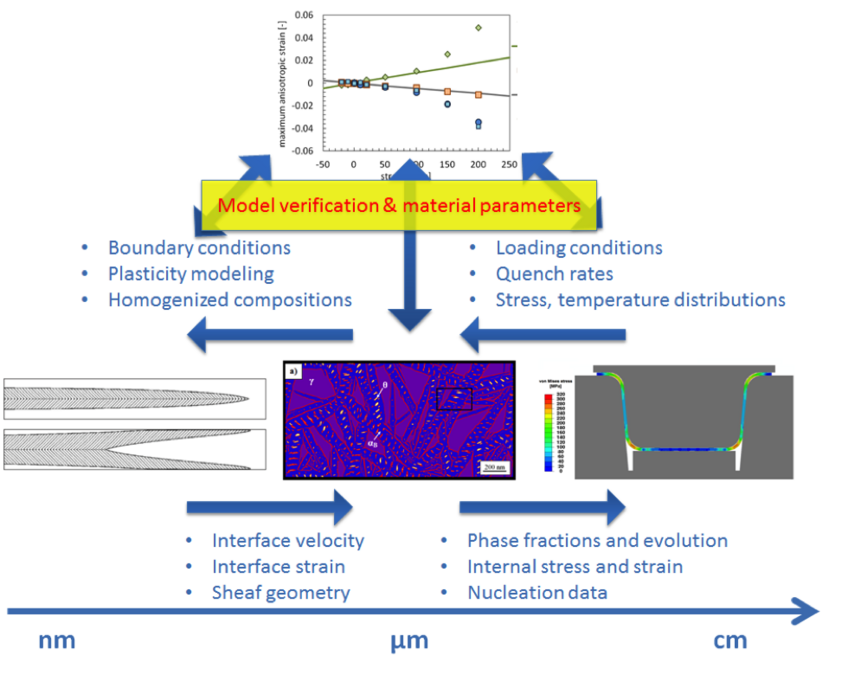Bainitic press hardening
Press hardening is an important processing technology for the production of safety relevant components for automotive applications. The parts are hot formed in the austenitic state in a tool with defined tool temperature below 550°C and afterwards quenched under load inside this tool. This technology allows forming of complex shaped parts made of ultrahigh strength steels. Depending on quenching conditions martensitic or bainitic microstructures form, with a strong couplingbetween mechanical load, internal stresses, chemical composition and phase transformation kinetics.

Work flow in the project: On the lowest scale, the description of individual bainite needles is carried over to intermediate scales of bainite sheaves and representative volume elements. This is carried over to JMAK descriptions on macroscopic scales.
© Robert Spatschek, Max-Planck-Institut für Eisenforschung GmbH
